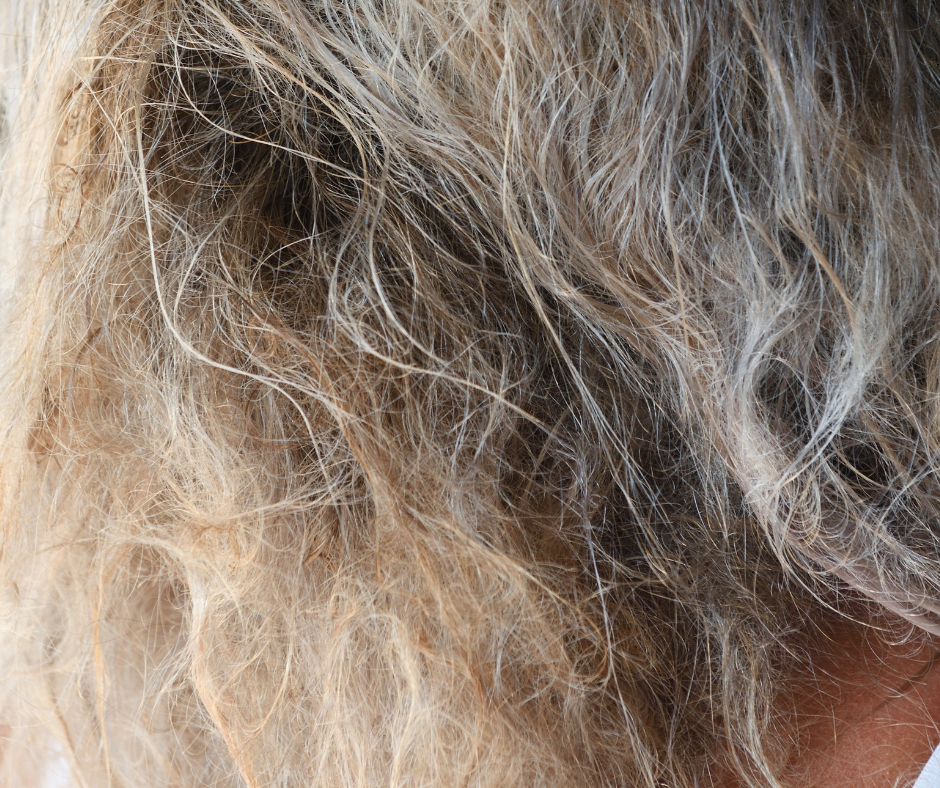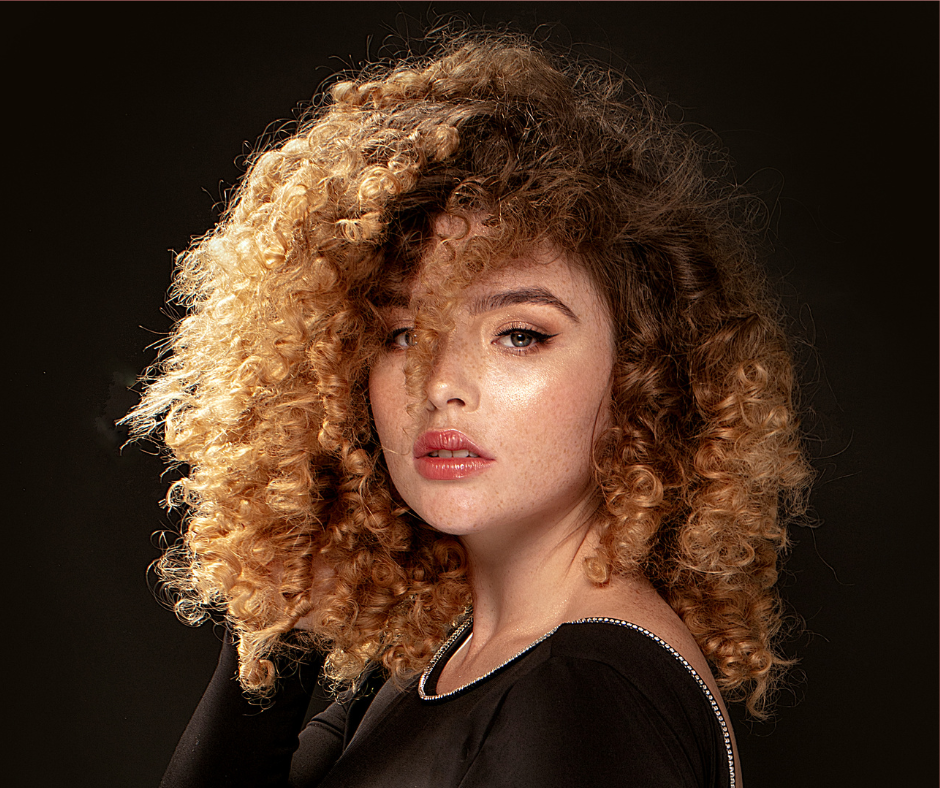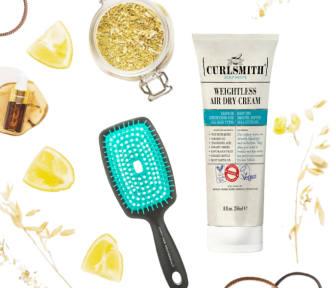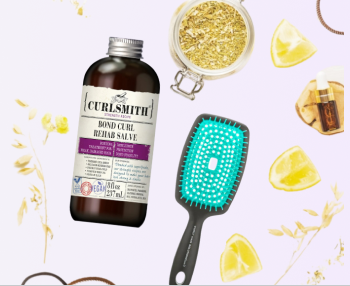It doesn't take much for tangled hair to become matted, whether it's naturally prone to this or you've been avoiding it for a few days and your - or your child's - tangles just keep getting worse and worse.
When it comes to untangling matted hair, things can quickly go wrong and become painful. Before you know it, you're losing a lot of hair and getting frustrated.
The key to getting rid of matted hair is following the right processes and techniques and having a lot of patience. We will guide you through some suggestions for a painless (as possible) at-home detangling experience.

What Causes Matted Hair?
Matted hair is mostly the interlocking of strands. This happens because the strands keep dancing around each other and soon become intertwined, forming dense and tight knots that are difficult to separate and can be painful too.
Matted hair shouldn't be mistaken for simple tangles; it's a much more severe version of it. Matted hair arises from not properly caring for your hair for an extended period, hair getting caught in a toy or becoming messy during activities, or simply rushing your hair care routine and not taking the time your individual hair needs for detangling every time you style or refresh. Matting can happen to anyone, children or adults. Some people are more prone to matting faster than others. Whether it takes a day or ten for your hair to descend into these difficult tangles, it doesn't matter; it can be equally frustrating to deal with.
Wavy, coily, or curly textured hair is incredibly prone to tangling because curls do not get enough hydration naturally due to the shape of the follicles. Natural oils cannot slide down and lubricate curly strands as easily as straight hair. Curly hair is drier, which makes all of us more susceptible to matting.
There's also the fact that our curl pattern may make the strands entangle around each other more just in the way they sit on our head. With hair that naturally tends to tangle, not staying on top of regular detangling can lead to matted hair even if you're not a child, who tend to get matted from doing things like somersaults or playing with toys that stick in their hair.
5 Steps to Untangle Matted Hair
Detangling matted hair does require a few steps to get it done right—to have most of your hair intact and sitting pretty with minimal breakage and tears (yours or your child's!).
Let's go over the steps:
1. Separate Hair into Sections
If you can, separate your hair into sections first. If you have a head full of thick hair, you can divide it into 6 sections. For hair that is not as thick or less full, 2 to 4 sections is a good number. Hold them in place, apart from each other, with clips. This will make the detangling task less daunting.
2. Wet Your Hair
Getting your hair wet is super important; there's no ease in your detangling without this step. You can use a spray bottle filled with water to wet your hair in sections or go to the shower and do your thing. However, having a spray bottle on hand would be helpful, as detangling can be time-consuming, and you need your hair to stay wet throughout the process.
As you are wetting your hair, run your fingers through your sections and do some finger detangling. Nothing too aggressive - just gently pick at the knots. You can add oils to your hair (a few drops of Righteous Roots Rx would work well for this) as you work your way through, as oils can provide the slip needed to help loosen those tangles.
3. Use Conditioner - Lots of It
For this, you might need to have two bottles of conditioner at hand: a regular rinse-out conditioner, and/or a detangling leave-in conditioner.
Apply a generous amount of conditioner. A conditioner is great because not only does it do a good job of hydrating your hair, but it also provides necessary slip for your detangling process.
This is the second time that the word "slip" is mentioned here. What does it mean?
Slip is the ease with which your fingers or a tool can move through your strands. When a product, in this case conditioner, is said to provide slip, it means it reduces friction, which helps with separating and detangling your hair without much discomfort. Check out our blog post FAQs: What is Slip? for more information on this topic.
So, apply enough conditioner to your hair section by section, working from the ends of your hair to the mid-lengths, to thoroughly coat the hair. You don’t want to get conditioner on your scalp or too close to it. Let the conditioner sit for a couple of minutes to soak into the hair.
For conditioners with excellent slip, take a look at the Soothing Mist Moisturizing Conditioner from Inashi and the LUS Brands | Love Ur Curls Silicone-Free Conditioner. For intense moisturizing we also recommend Uncle Funky's Daughter Richee Rich.
In place of a conditioner, a detangler, a leave-in conditioner, or even a deep conditioner can be used. All that matters is getting enough slip. You can always apply these for touch-ups as you need them.
Detanglers are good to work with as they are specifically designed for the job, products like Curl Keeper Slip or the Original Sprout Classic Miracle Detangler are great choices. Alternatively there are some leave-in conditioners with detangling properties as well as moisturizers, such as TreLuxe's Untie the Knot, Pretty Curly Girl Bye Bye Tangles and Knot Conditioner and Flora & Curl Hydrate Me Rose Water Detangling Lotion
4. Detangle with a Wide-Tooth Comb or Brush
Grab a wide-tooth comb or a detangling brush— for frequent tangles, the Super Detangling Brush or Curls Keeper Flexy Brush should be in your arsenal!
Begin to detangle in small areas, working your way from the ends to the roots, not vice versa. If you find a particularly stubborn knot, hold your hair directly above the knot and comb it out to reduce stress on your scalp and avoid hurting yourself (or your child).
5. Protect Your Wet Hair to Avoid More Tangling
After the detangling process, put your hair in a loose twist or pin hair up with large clips, out of the way while you continue showering or getting ready. This is to prevent the hair from knotting up again, as hair is fragile when wet.
If you are ready to style, you can style your hair now, but we recommend still working in sections as much as possible. This will help prevent tangles from forming as you work.
How to Prevent Matting and Tangles

One of the easiest ways to avoid future matting is wrapping your hair in a silk or satin pillowcase, scarf, or bonnet, especially at night. Friction from tossing and turning can make knots even worse. You can always put your bonnet on when you get home from work or school to help avoid touching your hair, which can also contribute to tangling if you are twirling strands around your fingers while watching TV, for example.
Detangling requires a great deal of patience. If you can, put on a distracting movie or show while you work out those knots! Thoroughly detangling your hair as part of your wash-day or refresh routine can greatly reduce the frequency in which you'll have to do "big" detangling sessions. Little and often should be your motto when it comes to getting rid of knots so they don't become matted: small sections, detangled frequently.
Ensure hair is well moisturized. Hair strands frequently moisturized with conditioners, deep treatments, and so on, will slide off each other better than drier hair.








